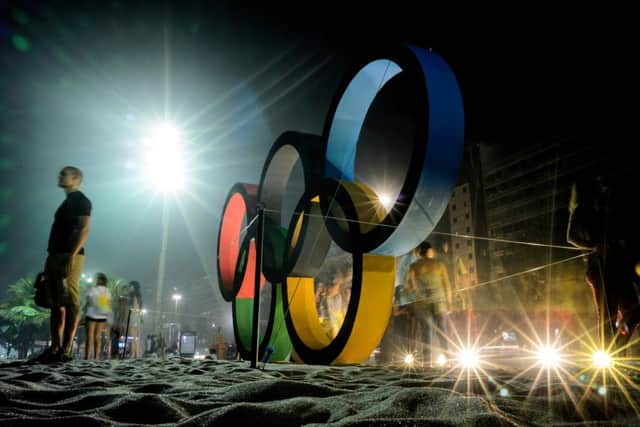Rio Olympic athletes advised '˜not to put head under water'


Not only are some 1,400 athletes at risk of getting violently ill in water competitions, but tests indicate that tourists also face potentially serious health risks on the golden beaches of Ipanema and Copacabana.
A survey of the aquatic Olympic and Paralympic venues has revealed consistent and dangerously high levels of viruses from the pollution, setting off alarm bells among sailors, rowers and open-water swimmers.
Advertisement
Hide AdAdvertisement
Hide AdIn light of the findings, biomedical expert Valerie Harwood had one piece of advice for travellers to Rio: “Don’t put your head under water.”
The most contaminated points are the Rodrigo de Freitas Lagoon, where Olympic rowing will take place, and the Gloria Marina, the starting point for the sailing races.
Sampling at the lagoon in March 2015 revealed an astounding 1.73 billion adenoviruses per litre. By this June, readings were lower but still hair-raising at 248 million per litre. By comparison, in California, readings in the thousands per litre set off alarm bells.
Despite a project aimed at preventing raw sewage from flowing into the Gloria Marina through storm drains, the waters remain just as contaminated. Sampling there, in March 2015, showed over 26 million adenoviruses per litre. This June, over 37 million per litre were detected.
Since the release of initial results last July, athletes have been taking elaborate precautions, including preventatively taking antibiotics, bleaching oars and donning plastic suits and gloves in a bid to limit contact with the water.
Dr Fernando Spilki, a virologist at Feevale University in southern Brazil who conducted the water tests, says the survey revealed no appreciable improvement in Rio’s blighted waters – despite clean-up promises stretching back decades.
“There is a variation in the levels of contamination, but it fluctuates much more as a result of climactic conditions than due to any measures that may have been taken to try to remove this contamination,” said Spilki.
While local authorities, including Rio Mayor Eduardo Paes, have acknowledged the failure of the city’s water clean-up efforts, calling it a “lost chance” and a “shame”, Olympic officials continue to insist Rio’s waterways will be safe for athletes and visitors.